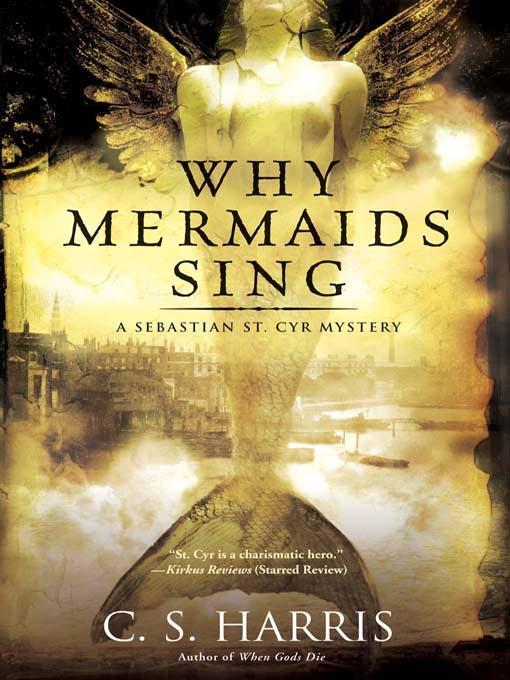
Why Mermaids Sing
Sebastian St. Cyr Mystery Series, Book 3
کتاب های مرتبط
- اطلاعات
- نقد و بررسی
- دیدگاه کاربران
نقد و بررسی

September 3, 2007
While appending a serial killer plot line to a historical setting is nothing new, Harris imbues what could be an overdone and tired narrative device with refreshing novelty, making his third Regency-era whodunit (after 2006's When Gods Die
) a triumph. Sebastian St. Cyr, an unconventional nobleman with a talent for detection, is called in by Westminster chief magistrate Sir Henry Lovejoy after two scions of the upper classes are found butchered and left on public display. St. Cyr soon finds a connection between the killer's calling card and a John Donne poem. As shadowy figures threaten and the parents of the victims display an inappropriate hostility to his efforts, the sleuth doggedly persists, uncovering a secret with shocking repercussions for London's upper class. Neatly meshing the page-turning whodunit plot with major developments in St. Cyr's love life, Harris shows every indication of assuming the mantle of the late Bruce Alexander as a reliable producer of quality period mysteries.

Starred review from October 1, 2007
Someone is brutally murdering the sons of the wealthy and aristocratic families of Regency London. Sebastian St. Cyr ("When Gods Die") is asked to unveil the perpetrator but does not realize that the case has its roots in the past and that his investigation will impact his personal life. Harris captures the Regency era beautifully while providing the reader with a flawlessly constructed mystery. Highly recommended for all mystery collections. Harris lives in New Orleans. [See Prepub Mystery, "LJ" 7/07.]
Copyright 2007 Library Journal, LLC Used with permission.

October 1, 2007
Sebastian St. Cyr, Viscount Devlin, former spy and amateur sleuth, has had a very busy year. In his third novel(following What Angels Fear, 2005, andWhen Gods Die, 2006) set in 1811, someone is butchering the sons of prominent men in London and filling their cadaverous mouths with bizarre objects. Stymied authorities call on the Regency periods best forensic psychologist, St. Cyr, who has a tough time finding a link between the disparate victims families. He does, however, identify the John Donne poem Song as the symbolic origin of the objects found on the bodies, and after three deaths, he knows who the next victim will be. Unfortunately, this poetic link to the killers motive may elude most readers. Despite Sebastians adventurous hard living, various social entanglements, and prodigious Holmesian intellect, he seems flat next to secretive, seductive Kat Boleyn, who plays only a minor role in the story. Fans of the more politically intriguing previous book may be disappointed, but those who relish gruesome murders in the style of The Dante Club or The Alienist will find plenty upon which to chew.(Reprinted with permission of Booklist, copyright 2007, American Library Association.)

























دیدگاه کاربران